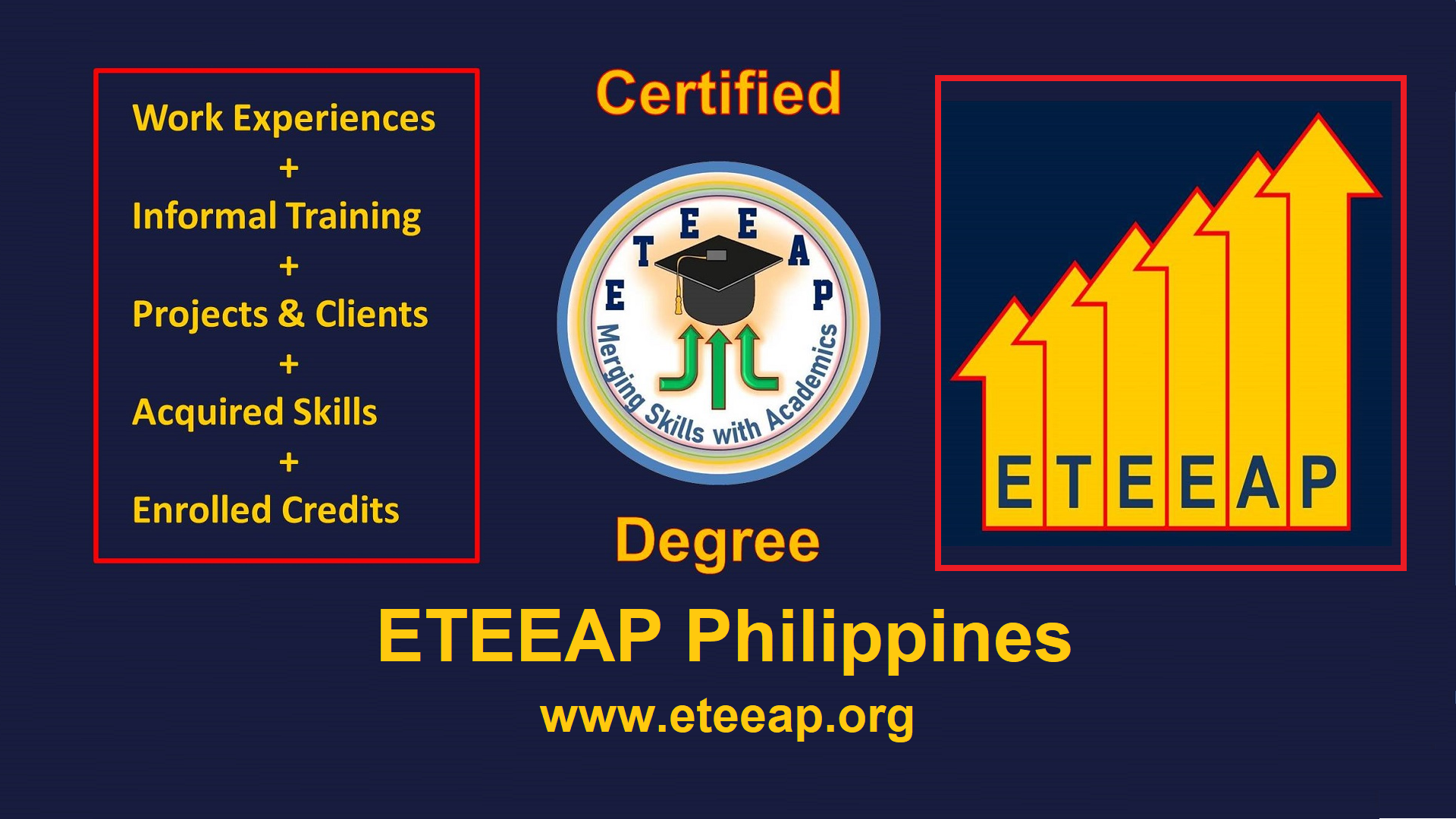ETEEAP was introduced by the Philippine government purposely for Filipinos who were forced forego their college or university education due to circumstances beyond their control. It was established by the Executive Order Number 330 (EO#330) signed by former Philippine President Fidel V. Ramos on May 10, 1996. But there was a precursor to the ETEEAP.
Prior to the signing of EO#330 was a part of the 1987 Philippine Constitution Governance Act for Basic Education otherwise known as Republic Act 9155 (RA955) which established the Alternative Learning System (ALS).
The official website of the Department of Education (DepEd) in the Philippines describes the reason why these systems were established this way: “Many Filipinos do not have a chance to attend and finish formal basic education (Grades 1-6 and Year 1-4) due to many reasons. Some drop out from schools while some do not have schools in their communities. Since every Filipino has a right to free basic education, the Government establishes ALS to provide all Filipinos the chance to have access to and complete basic education in a mode that fits their distinct situations and needs.”
How does the system work?
The same source explains, “There are two major programs on ALS that are being implemented by the Department of Education, through the Bureau of Alternative Learning System (BALS). One is the Basic Literacy Program and the other is the Continuing Education Program – Accreditation and Equivalency (A&E). Both programs are modular and flexible. This means that learning can take place anytime and any place, depending on the convenience and availability of the learners.”
The difference between the Formal Education System and the Alternative Education System is that “Formal Education system is classroom-based, managed by trained formal school teachers” while “ALS Non-formal Education happens outside the classroom, community-based, usually conducted at community learning centers, barangay multi-purpose hall, libraries or at home, managed by ALS learning facilitators, such as mobile teachers, district ALS Coordinators, instructional managers at an agreed schedule and venue between the learners and facilitators.”
In the above description the ALS has two sections. The first one is the Basic Literacy Program which is intended for those who have not completed their basic education (Grade 1 to Grade 10). The recent implementation of the K-12 system for the Philippines to comply with global standard added the senior high school level which is Grade 11 and Grade 12. The students’ qualification to graduate (In elementary, secondary or senior high school) is evaluated by series of examinations prepared and administered by the DepEd at designated place and time throughout the country. Outside the Philippines, these are mostly held at Philippine Embassies or Consulates. These examinations will ensure that the students are qualified to enter the next level of their education. As for the Continuing Education Program-Accreditation and Equivalency, the ETEEAP comes into play for students who wish to continue on acquiring tertiary education or higher learning.
In the Philippines the basic education is taken care of by the Department of Education (DepEd) while the Tertiary or higher education is under the supervision and implementation of the Commission on Higher Education (CHEd).
To sum it up, ALS is intended for adults who have not completed their basic education (Elementary and/or Secondary as far as Grade 10). Then they can continue to take up senior high school. ETEEAP on the other hand is for adults who completed their secondary education but were not able to finish their college degree. There are minimum age requirements for these.
Who can benefit from the ETEEAP?
Anyone who has completed secondary education through the Formal Education System or the Alternative Learning System and did not have a chance to start or complete a college or university degree can benefit from the ETEEAP. But how does the system work? How much is the cost? What are the requirements? Other articles on this site provide answers and more information on these questions. You can find them on the links below.
- What is ETEEAP? We full discussion on this link.
- ETEEAP Manual – See this link.
- Ano ang ETEEAP? See this link.
- Sino ang Pwede sa ETEEAP? See this link.
- Paano Mag-enroll sa ETEEAP? See this link.
- Magkano ang Babayaran sa ETEEAP? See this link.
References:
https://www.deped.gov.ph/k-to-12/inclusive-education/about-alternative-learning-system/
https://www.eteeap.org/
